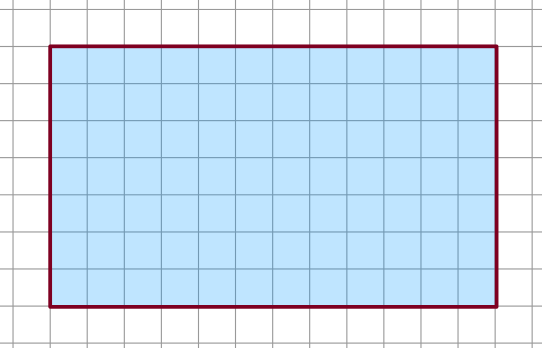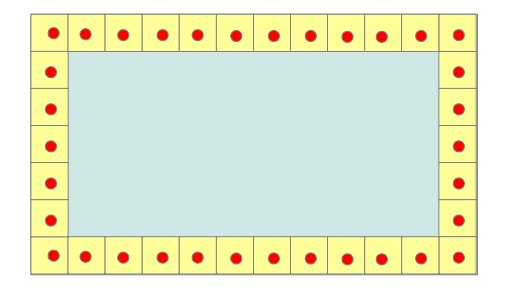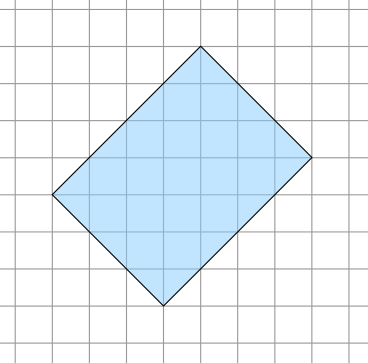
[ home ]
Download a PDF file with the diagrams in this page presented as a discussion point for students.
In GCSE Classes in adult education centres and FE Colleges we have about 100 hours of class time per year. The new syllabuses (syllabii?) put more emphasis on problem solving and describing the process of problem solving than previously. I'm using more discussion based activities this year.
Put the diagram below on your interactive whiteboard. Ask students to work out the perimeter.

Almost all will arrive at 38 units ("centimetres" because I always give out 1 cm squared paper in the perimeter and area lessons). Follow up questions will show that many know the different forms the perimeter can take for a rectangle, 12 + 7 + 12 + 7 or 2(12 + 7) or 2 × 7 + 2 × 12. Using symbols such as L and W to link with algebra worked well when I tried it a few weeks ago, I was able to make links to factorising and multiplying out brackets in a visual context.
A small number (about one in twenty based on word from colleagues) will say the answer is 34cm, based on counting the squares around the periphery of the shape, something like the diagram below. If they are using shapes on squared paper, you can actually see their dots in the squares.

I spent a bit time with my one student who counted squares for perimeter. Just using 1cm squared paper and a ruler identifying edges as lines. Then measuring the lengths of the edges with a ruler. We used shapes made from combinations of rectangles, and the student seems to have a better idea of perimeter as length and area as the number of squares in the shape.
Show the rectangle below and ask about how you would find the perimeter.

Just about half students in the class will tell you that the perimeter is something to do with 14cm, or at least they do in my classes. The rest will know there is something wrong with that, but will need prompting to link the situation with Pythagoras' result.
Using rulers with the shape drawn on 1cm paper helps.
The students registered for the higher level exam can practice their surds here. The length is 4√2 and the width is 3√2, so the area must be 24 cm2. Test by ruler and calculator!
A further extension would be to enclose the slanting rectangle in a square 7 by 7 units, then use the area of a triangle formula to find the area of the four triangles outside the rectangle but inside the square. The area of the rectangle can be found by subtraction.
Keith Burnett, Last update: Thu Apr 05 2012